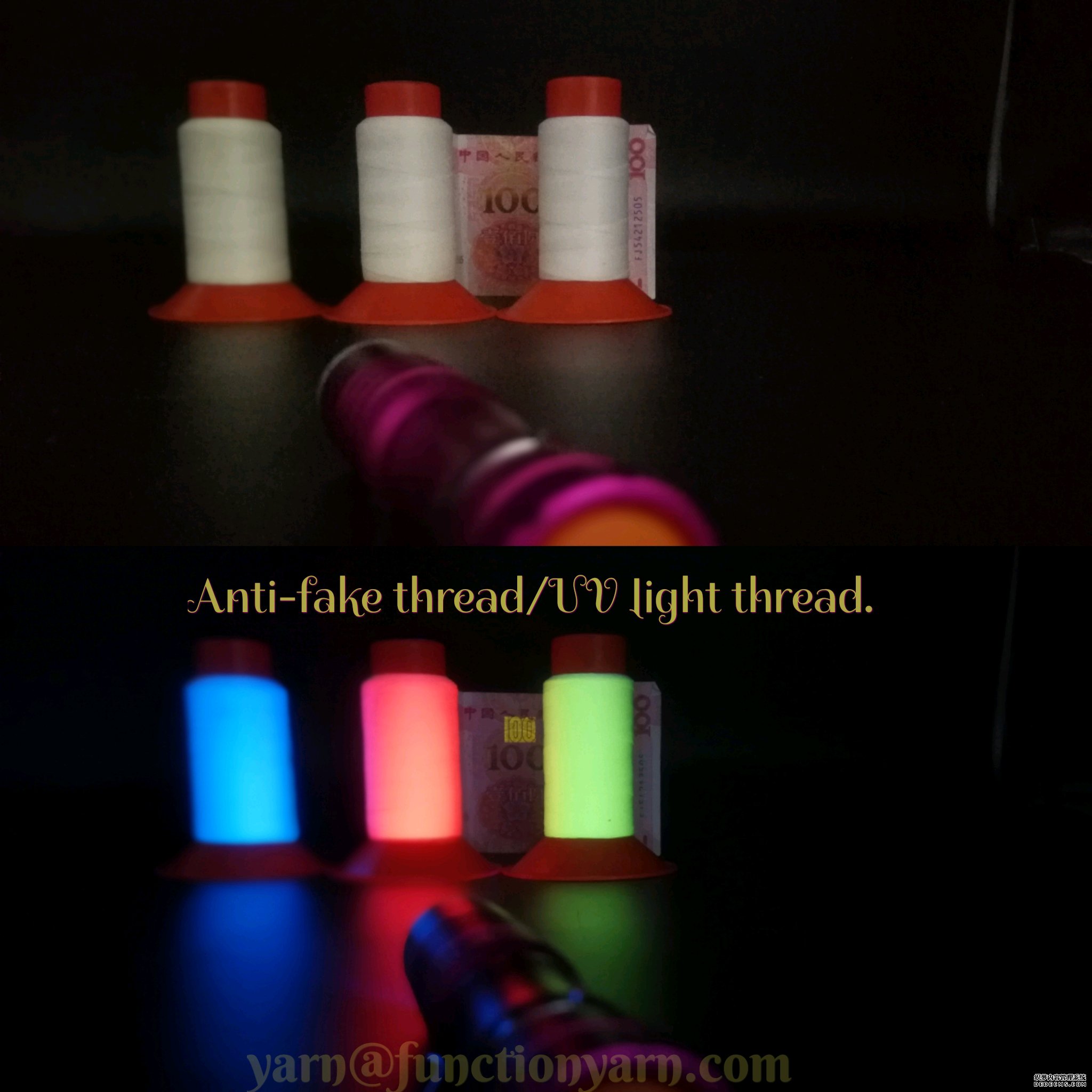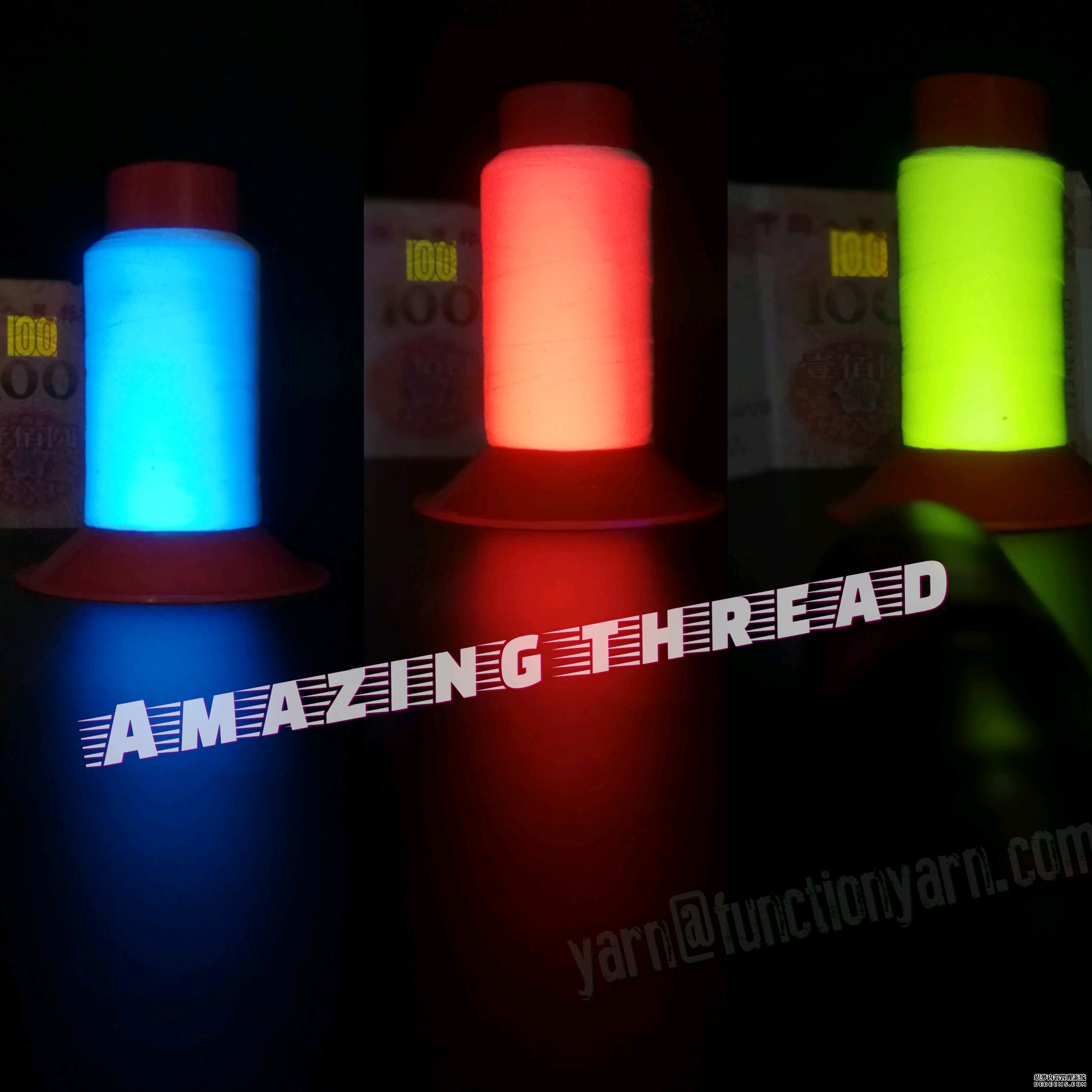What is the anti-fake yarn ?How to use the anti-fake yarn fo
What is the anti-fake yarn ?


Anti-fake yarn, also known as security yarn or security thread, is a type of specialized thread designed to enhance the security of various products, particularly labels, documents, and textiles. It incorporates features that make it difficult to counterfeit or replicate, thereby providing a means of authentication and protection against fraud.
Here are some common features and characteristics of anti-fake yarn:
Incorporated Security Features: Anti-fake yarn may contain various security features such as microprinting, holographic elements, fluorescent properties, or color-shifting properties. These features are often difficult to reproduce using standard printing or copying methods, making it challenging for counterfeiters to replicate.
ntegration into Products: Anti-fake yarn can be integrated into various products such as labels, packaging, textiles, or currency. It may be woven into the material, embedded within layers, or incorporated into specific design elements to enhance security.
Detection Methods: Certain security features of anti-fake yarn may require special equipment or techniques to detect. For example, some features may be visible only under ultraviolet (UV) light, while others may require scanning with specialized devices for authentication.
Customization: Anti-fake yarn can be customized to meet the specific security needs of different applications. Manufacturers may offer a range of options for colors, patterns, and security features to suit the requirements of their clients.
Overall, anti-fake yarn serves as an important tool in the fight against counterfeiting and fraud, providing a reliable means of authentication and protection for a wide range of products and documents.
How to use the anti-fake yarn for label?


Using anti-fake yarn for labels involves integrating the yarn into the label design in a way that makes it difficult for counterfeiters to replicate. Here's a general outline of how anti-fake yarn can be used effectively for labeling:
Select the type of anti-fake yarn: There are various types of anti-fake yarn available, each with its own unique features such as fluorescence, color-changing properties, or microprinting. Choose a type of yarn that suits the security needs of your product.
Design the label: Work with designers to create a label that incorporates the anti-fake yarn seamlessly. Consider integrating the yarn into the design in a way that makes it difficult to remove or tamper with. This might involve weaving the yarn into the label material or embedding it within specific areas of the label.
Secure attachment: Ensure that the label is securely attached to the product using appropriate adhesive or stitching techniques. This helps prevent counterfeiters from simply replacing the label with a fake one.
Provide authentication instructions: Include instructions on how to authenticate the label using the anti-fake yarn. This might involve using UV light to reveal hidden patterns or features, scanning the label with a specialized device, or comparing the yarn's properties with a known authentic sample.
Training and awareness: Educate consumers, retailers, and inspectors on how to identify authentic labels using the anti-fake yarn. This can help ensure that the security features are effectively utilized to detect counterfeit products.
Regular monitoring and updates: Continuously monitor the effectiveness of the anti-fake yarn and update security measures as needed to stay ahead of counterfeiters who may attempt to replicate or bypass the security features.
By following these steps, you can effectively use anti-fake yarn for labeling to enhance the security of your products and protect against counterfeiting.